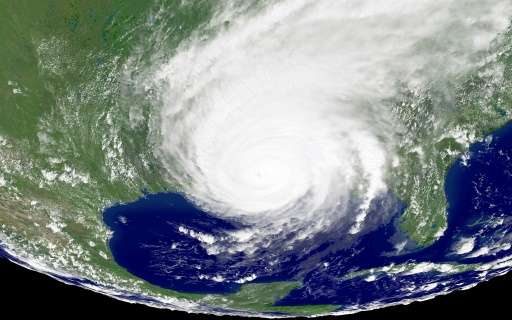Hurricanes and typhoons: cyclones by another name

No matter what they are called—cyclones, hurricanes or typhoons—the giant tropical storms that form in oceans near the Americas and Asia can be deadly, destructive and terrifyingly capricious.
At full throttle, these low-pressure systems pack more power than the energy released by the atomic bomb that levelled Hiroshima.
In the South Pacific and Indian Ocean, they are known as cyclones.
The same weather phenomenon in the Atlantic and northeast Pacific is a hurricane, while "typhoon" is the term used in Pacific Asia.
From outer space, they look like a smoke-enshrouded fireworks pinwheel, or what astronomers imagine as the swirling vortex around a black hole.
Meteorologists call them "tropical cyclones," and grade them on a five-step scale according to intensity, taking into account maximum sustained wind force and potential damage.
Hurricane Harvey, barrelling in on Texas, is currently at Category 2 (125-169 km/h or 96-110 mph winds), and could strengthen to Category 3 (170-224 km/h or 111-129 mph) by the time it strikes land.
Category 5 packs winds of 280 km/h (157 mph) or more. Hurricane Katrina was a Category 5, killing over 1,800 people across the US Gulf Coast when it struck in 2005.
Cyclones are formed from simple thunderstorms at certain times of the year when the sea temperature is more than 26 degrees Celsius (79 Fahrenheit) down to a depth of 60 metres (200 feet).
Sucking up vast quantities of water, they can lead to torrential rains and flooding, along with loss of life and property damage.
Storms 'to get stronger'
Rising seas, along with warmer air and sea water—all brought on by global warming—will boost the strength of cyclones, and increase the damage they cause, scientists say.
"We know that the strongest storms are going to get stronger as the climate warms," said James Elsner, a professor at Florida State University and an expert on hurricanes.
"The ocean fuels these storms with warm water—the warmer the waters, the stronger the storm can get," he told AFP.
Sea level rise—predicted to top a metre (three feet) by the end of the century—is already contributing to more devastating storm surges, he added.
"Finally, as the atmosphere warms, it holds more water—that makes the storm produce more rain, which can lead to flooding."
At the same time, cyclones may become less frequent, he added.
Hurricanes and typhoons can trigger large swells that move faster than the storm, travelling 1,000 kilometres (more than 600 miles) beyond its confines.
The storms themselves—with a calm "eye" at their centre—measure up to 1,000 km across.
They weaken rapidly when they travel over land or colder ocean waters.
Cyclones are closely monitored by satellites, and specialised centres around the world—in Miami, Tokyo, Honolulu and New Delhi—track the super storms' trajectories under the coordination of the World Meteorological Organisation (WMO).
© 2017 AFP



















